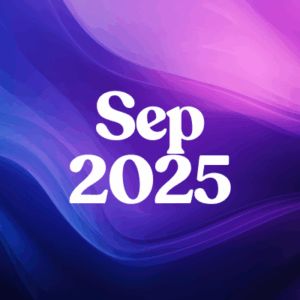After more than 30 years in this field, Human-Computer Interaction (HCI) is already a well-established design discipline. Now, the pervasiveness of big data, new data collection, interaction techniques are giving rise to a new discipline. This is what we know as Human Data Interaction (HDI). Moreover, this is likely to be a field with major new opportunities for designers and analysts in the coming decades. Human Data Interaction until recently has been as blank as the data itself. Manipulation of small sets of data for specific purposes. With the advent of massive databases and new tools with which to collect, manipulate and analyze data. There is a need to examine these interactions in greater detail.
Draftss has also helped its clients to develop substantial e-commerce platforms with unlimited graphics designs. This includes illustrations, WordPress, HTML, and more for building your website, brand, etc. you can check on our website at draftss.
Important Data Concepts
Data is simply a collection of information. But when it is combined with other ideas, it becomes more relevant to the discipline of HDI.
- Data trails – the records of transactions of data.
- Data smog – when data becomes an overwhelming and confusing collection of information.
- Big data – cloud and mass-scale computing lead to large collections of data. This may be challenging to manipulate and manage.
The interaction between these three concepts gives rise to the demand for HDI.

The Principles of HDI
According to Mortier et al. (Human-Data Interaction: The Human Face of the Data-Driven Society), the three key principles underpin HDI as a discipline:
- Legibility – This is an examination of how to use the data and the ways it can process. This is clear to the people related to the data concerns. What data are used?. In what ways inferences are deduced from the data set?. This is important from both an ethical and legal perspective and may clash with the need to keep proprietary techniques concealed to protect the intellectual property connected to these processes.
- Agency – This is about how the individual may consent (withdraw/withhold) to the use of their data and to the processes that others may wish to conduct on that data. However, this is not to say that these needs always be an explicit choice. But that there will be times that this is essential, possibly about damaging uses of data.
- Negotiability – This is concerned with the societal contract surrounding the use of data. The way our culture interacts with data may change over time. However, legal and ethical frameworks may develop about the use of data.
Principles Associated with Legibility
It is difficult for us to see how our data, used from credit ratings to health insurance. Although larger databases examine and interrogate our data for drawing inferences from that data. This leads to a need for legibility and with that some simple principles:
- Our data is collected, so we have to be aware of our data.
- We need to be aware of the data itself and the implications of that data. This is a more challenging concept. In particular, there be many varying viewpoints on the acceptable use of data and that all viewpoints may be valid.
Visualization is can used to tackle this situation. It might be through other forms of public explanation as well. This doesn’t negate the complexity of the challenge – some data sets are likely to be insanely complex to explain through visual means.
The Principle of Agency
This is an even more challenging area to address. Not only do we need the ability to consent to other’s use of our data. But we also need to be able to challenge the use of that data. However, if we believe the inferences drawn from it are harmful or just plain wrong, we can avoid the principles.
Agency concerns involve not just privacy and inference but also the management of our data. While, in many instances, people may have no intention of becoming involved in this process – it is important that they can, even if their interest is simply based on curiosity.
There may also need to be a “common good” applied to the use of data. Your data may, for example, be able to use to predict or report on traffic flows. This is not intrinsically harmful to any individual and the issue of agency becomes cloudy because if enough users were to be able to exert their right to withdraw from such use of their data – the efficiency of these valuable systems would be degraded.

The Principle of Negotiability
In a world, where our data is traded at will; there is a need for the subjects of the data to be able to negotiate on how this value may be used and traded. At the current moment, it is clear that the balance of power lies too far in the hands of the data collectors and aggregators.
It seems unrealistic for people to manage all of their own personal data in an instance by instance, transaction by transaction model, and thus legal and regulatory frameworks may need further development to address these concepts on a larger scale.
There is also a requirement to ensure that, once again, societal benefits are also considered beyond the needs of the individual. For example, data sharing within the scientific community is becoming standard and driving the pace of innovation and development.
Finally, there is a mass of cultural and contextual considerations to be taken into account, and data interaction will need to be studied within specific communities so that guidelines and laws can become effective in all situations.

Conclusion
Human Data Interaction (HDI) is a new and exciting sphere of design and IT practices. The concepts outlined here are intended to begin the development of this field and to show the opportunities and challenges that this discipline will begin to address shortly.
You can try out draftss for an excellent experience and increase your product marketing. We provide premium quality services on unlimited graphic designs, WordPress, Webflow, HTML, Illustrations, Websites, Landing pages, Dashboards, App UI/UX, and many more. Here we provide our clients with 73+ types of design and code services.






















